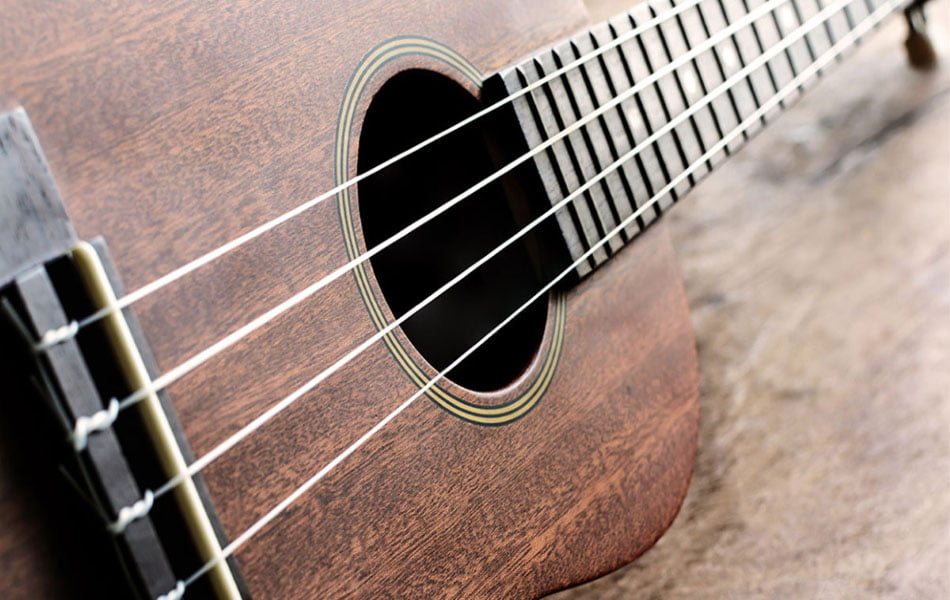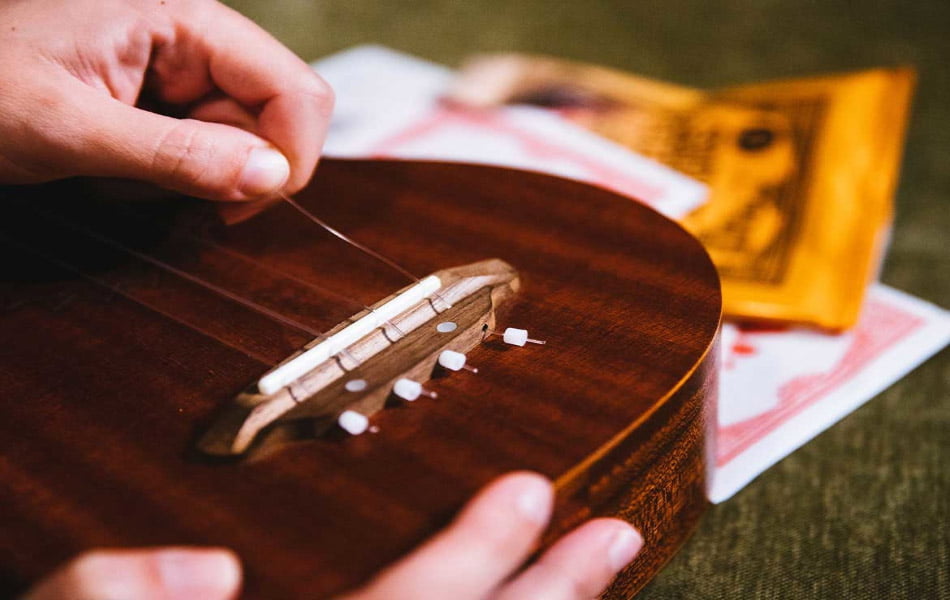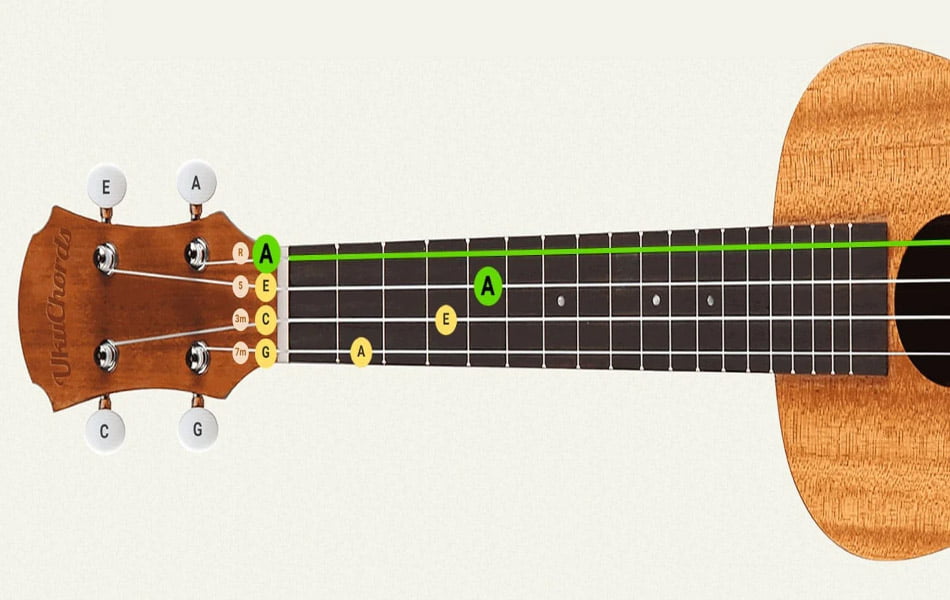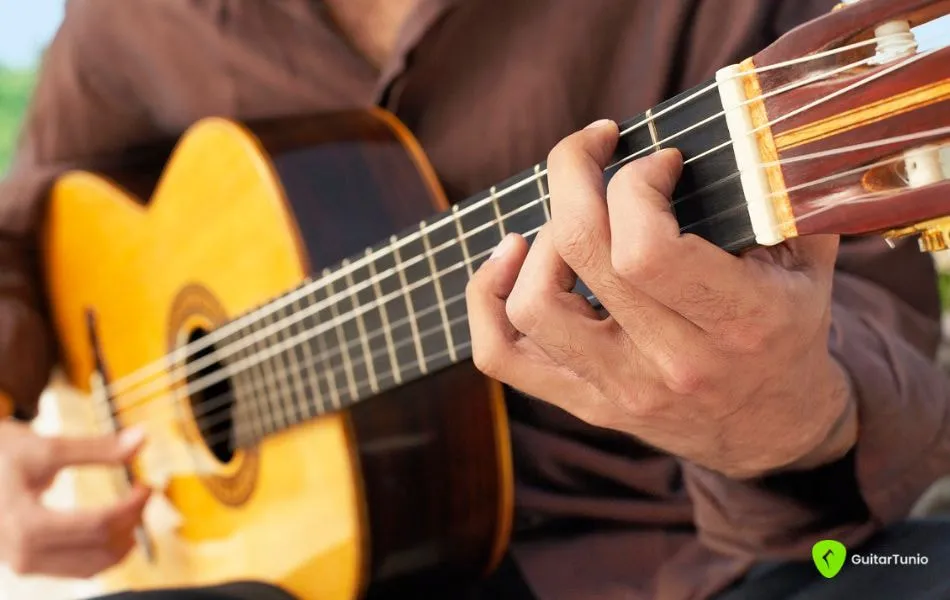How To Change Your Ukulele Strings
Just like the guitar, we need to know how to keep the ukulele in top condition. With owning a ukulele, you should know some basic things to take care of the instrument such as when to change strings on your ukulele, and how to restring the ukulele properly. In the following article, we will guide you on how to change the ukulele strings.
Why should you change your ukulele strings?
There are many ukulele players who rarely change the strings and only do this action when the strings are broken or the sound is dull. However, this is considered a bad habit to preserve the sound quality of the ukulele.

When playing the ukulele, the dust in the air and sweat from the hands will stick to the strings, affecting the vibration, and elasticity of the strings, and directly affecting the resonance of the sound. In addition, the dirt and sweat will seep inside the outer windings of the string, thereby penetrating deep into the inner core, causing corrosion, reducing the life of the strings, and even affecting your health if your fingers are constantly in contact with dirty strings.
When should you change ukulele strings?
Restringing depends a lot on how often you use your ukulele and also on the quality of the strings. There are some musicians who change their strings after only a few weeks, but there are also people who restring their ukulele after a few months. One piece of advice is that before each time you start playing, check the strings thoroughly. If there are some of the following signs, it's time to replace a new set of strings.

- Your ukulele needs to be tuned more often than you use it. Even when you have finished tuning and started playing, the strings will gradually drop. It is a sign that your strings have worn out and no longer have a grip on the tuner.
- The strings are no longer as smooth as they used to be and have kinks. The kinks occur when your strings make continuous contact with the frets.
- The sound of the strings is no longer as bright, resonant, and loud as before.
How to change strings on your ukulele
Remove the old strings
Turn the tuning pegs to loosen the tension on the strings and then carefully unwind them from the tuners. Finally, you untie them from the bridge and safely remove the old strings.

Note: You should not use scissors or a knife to cut the strings in half because the tension of the strings will cause the strings to shoot into your eyes, very dangerous.
Clean the ukulele
After the old or broken strings have been removed, you should clean the ukulele, especially the neck, bridge, and frets. You should use a soft cloth to clean the instrument and get off the dust on the fretboard, headstock, bridge, and ukulele surface. With high-quality ukuleles made of solid wood, you can use oil to clean the ukulele, this will help the wood of the instrument have the longest life. You should clean all parts of the ukulele.
Install the new strings
Once the ukulele has been cleaned, you proceed to install the strings on the ukulele. You should ensure the order of the strings and the steps to install the strings to limit possible bends. The order of the ukulele strings in turn from top to bottom, based on the size of the strings: the second smallest string is the G string, the biggest string is the C string, the second biggest string is the E string, and the smallest string is the A string.

On ukuleles that do not have a bottom hole but only a small slot, you should put the string in that slot so that the initial knot keeps the string tight and then pulls up the tuner. The ukulele strings will now be on the inside of the clef, not the outside. You wrap the string a few times around the tuner and the excess ends will go into the tuning peg hole.
With ukuleles with an inner hole, you perform the string through the hole below and leave a little excess.
Tune the Ukulele
Once you've finished attaching the strings to the ukulele, you'll now tune the ukulele properly. To complete this step, you can a digital tuner or ukulele tuner app like Guitar Tunio. Guitar Tunio is available for both Android and iOS smartphones, check it out!

Another note is that the ukulele strings are mainly nylon strings, so you will have to regularly tune the strings because the new nylon strings are easy to slip off.
Hope the above article is useful to you.








